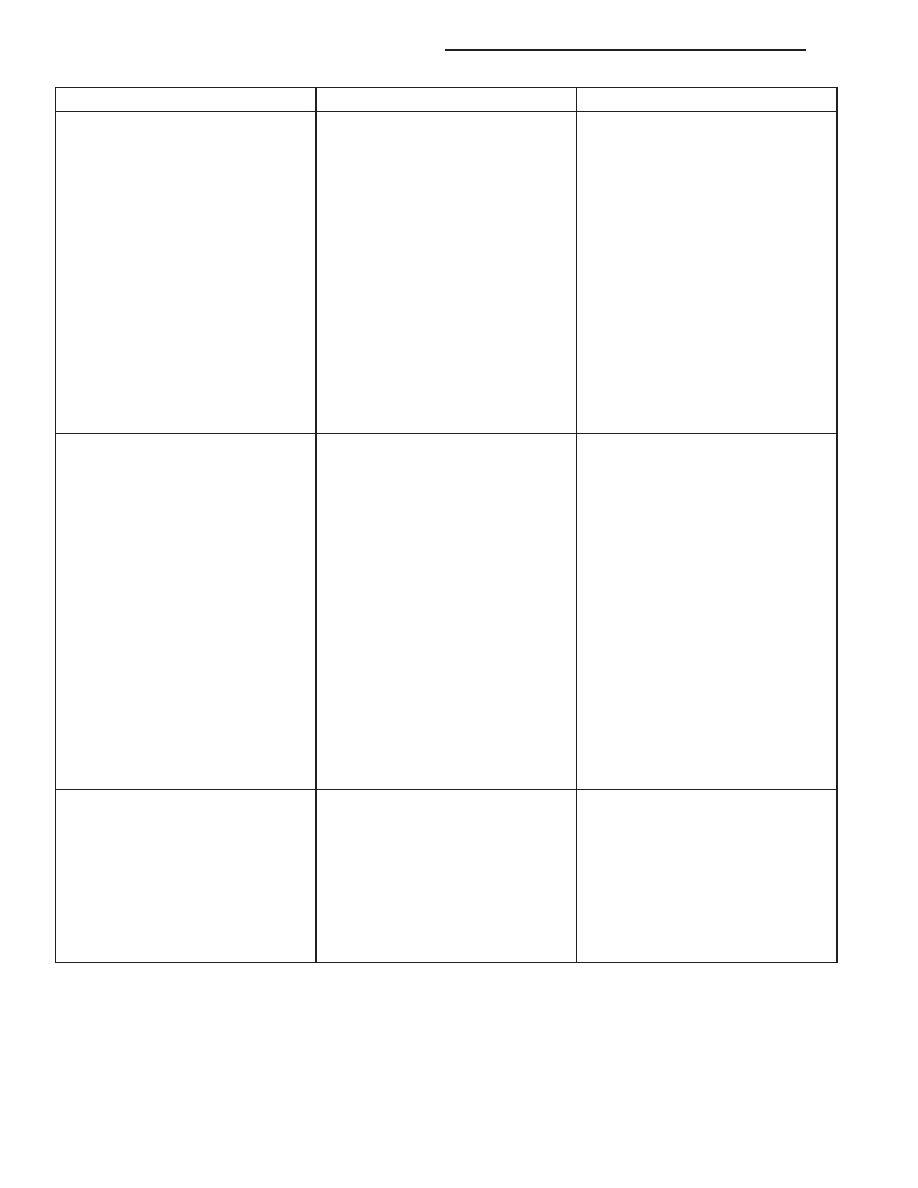Content .. 1606 1607 1608 1609 ..
Chrysler 300/300 Touring/300C, Dodge Magnum. Manual - part 1608

CONDITION
POSSIBLE CAUSES
CORRECTION
MAIN BEARING NOISE
1. Insufficient oil supply
1. Check engine oil level.
2. Low oil pressure
2. Check engine oil level. If ok,
Perform oil pressure test. (Refer to
9 - ENGINE/LUBRICATION -
DIAGNOSIS AND TESTING)
3. Thin or diluted oil
3. Change oil to correct viscosity.
4. Excessive main bearing
clearance
4. Measure bearings for correct
clearance. Repair as necessary
5. Excessive end play
5. Check crankshaft thrust bearing
for excessive wear on flanges
6. Crankshaft main journal out of
round or worn
6. Grind journals or replace
crankshaft
7. Loose flywheel or torque
converter
7. Inspect crankshaft, flexplate/
flywheel and bolts for damage.
Tighten to correct torque
LOW OIL PRESSURE
1. Low oil level
1. Check oil level and fill if
necessary
2. Faulty oil pressure sending unit
2. Install new sending unit
3. Clogged oil filter
3. Install new oil filter
4. Worn oil pump
4. Replace oil pump assembly.
5. Thin or diluted oil
5. Change oil to correct viscosity.
6. Excessive bearing clearance
6. Measure bearings for correct
clearance
7. Oil pump relief valve stuck
7. Remove valve to inspect, clean
and reinstall
8. Oil pickup tube loose, broken,
bent or clogged
8. Inspect oil pickup tube and pump,
and clean or replace if necessary
9. Oil pump cover warped or
cracked
9. Install new oil pump
10. Faulty or missing piston cooling
jets.
10. Replace piston cooling jets.
OIL LEAKS
1. Misaligned or deteriorated
gaskets
1. Replace gasket
2. Loose fastener, broken or porous
metal part
2. Tighten, repair or replace the part
3. Front or rear crankshaft oil seal
leaking
3. Replace seal
4. Leaking oil gallery plug or cup
plug
4. Remove and reseal threaded
plug. Replace cup style plug
9 - 2456
ENGINE - 6.1L SERVICE INFORMATION
LX